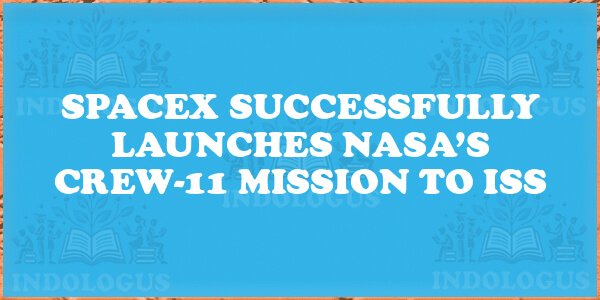In a groundbreaking event, SpaceX accomplished the launch of NASA’s Crew-11 mission on August 1, 2025, propelling a diverse crew of four astronauts to the International Space Station (ISS).
The Launch from Kennedy Space Center
- The launch transpired at 11:43 a.m. ET (1543 GMT) from Launch Complex 39A at NASA’s Kennedy Space Center in Florida.
- The astronauts embarked on SpaceX’s Dragon capsule, attached to the reliable Falcon 9 rocket.
- After a 16-hour journey, the crew is anticipated to dock at the ISS around 3 a.m. (0700 GMT) on Saturday.
- The mission surmounted weather-related delays following a postponed attempt on July 31 due to adverse weather conditions.
Meet the Crew of NASA’s Crew-11
- Zena Cardman – NASA astronaut
- Michael Fincke – Veteran NASA astronaut
- Oleg Platonov – Russian cosmonaut
- Kimiya Yui – Japanese astronaut
The team will engage in research experiments, station maintenance, and critical scientific projects pivotal to advancing human space exploration.
Mission Duration: A Potential New Benchmark
While typical NASA crew rotation missions span approximately six months, the Crew-11 mission could potentially extend to eight months. This adjustment aims to synchronize U.S. mission schedules with Russia’s ISS missions. NASA will closely monitor the Dragon capsule’s health and performance at the ISS before confirming the prolonged duration.
International Cooperation Amid Geopolitical Tensions
- The launch witnessed the presence of a Russian delegation, including Roscosmos chief Dmitry Bakanov, emphasizing the ongoing cooperation between NASA and Roscosmos despite strained U.S.-Russia relations.
- Bakanov convened with acting NASA Administrator Sean Duffy, marking the initial direct meeting between NASA and Roscosmos heads since 2018.
- Discussions revolved around sustained ISS operations and prospective lunar exploration.
- While no new commitments emerged, the conversation underscored the ISS as a rare positive aspect in U.S.-Russia relations.
The Greater Picture: Artemis vs. China-Russia Moon Program
While the ISS continues to unite space powers, Russia has withdrawn from NASA’s Artemis program to collaborate with China’s lunar exploration initiative, indicating an escalating space rivalry. NASA’s Artemis program targets a return to the Moon and eventual crewed Mars missions. Russia’s decision mirrors evolving alliances in the modern space race.
Key Takeaways for Competitive Exams
- SpaceX successfully launched NASA’s Crew-11 mission to the ISS with a diverse international crew.
- The mission may extend to eight months, deviating from the traditional six-month duration for NASA crew rotations.
- Despite geopolitical tensions, the ISS remains a beacon of cooperation between space agencies.
- Russia’s alignment with China’s lunar program signifies shifting dynamics in space exploration alliances.




